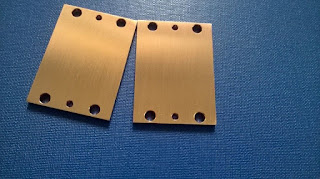The material properties
The material properties can be classified
into three major headings:
(i) Physical,
(ii) Chemical,
(iii) Mechanical. Physical properties
Precision CNC machining parts Density
or specific gravity, moisture content, etc., can be classified under this category. Chemical properties
Precision CNC machining parts Many
chemical properties come under this category. These include acidity or
alkalinity, reactivity and corrosion. The most important of these is corrosion
which can be explained in layman’s terms as the
resistance of the material to decay while in continuous use in a
particular atmosphere.
Precision CNC machining parts Mechanical
properties Mechanical properties include the strength properties
like tensile, compression, shear,
torsion, impact, fatigue and creep. The tensile strength of a material
is obtained by dividing the maximum load, which the specimen bears by the area
of cross-section of the pecimen. This is a curve plotted between the stress along the
Y-axis(ordinate) and the strain along the X-axis(abscissa) in a tensile test. A
material tends to change or changes its dimensions when it is loaded, depending
upon the magnitude of the load. When the load is removed it can be seen that
the deformation disappear s. For many materials this occurs up to a certain
value of the stress called the elastic limit. This is depicted by the straight
line relationship and a small deviation thereafter, in the stress-strain curve.

没有评论:
发表评论